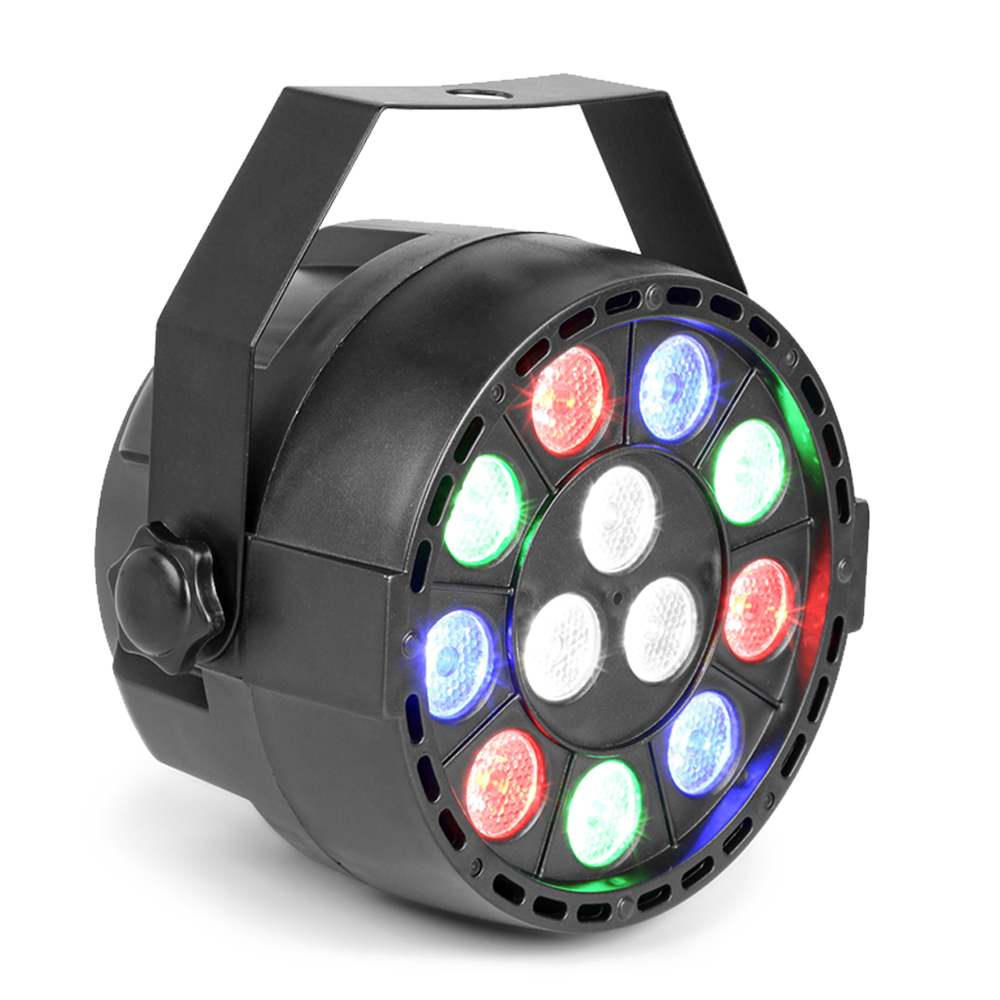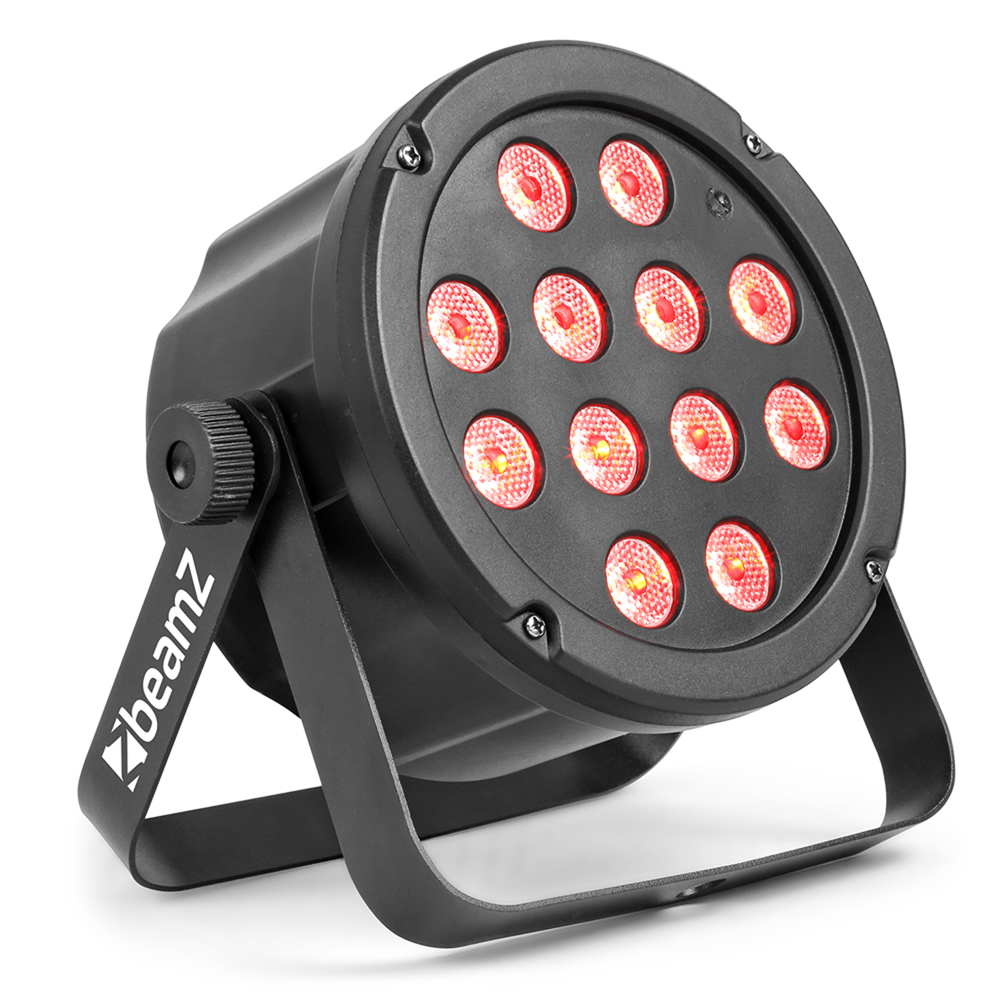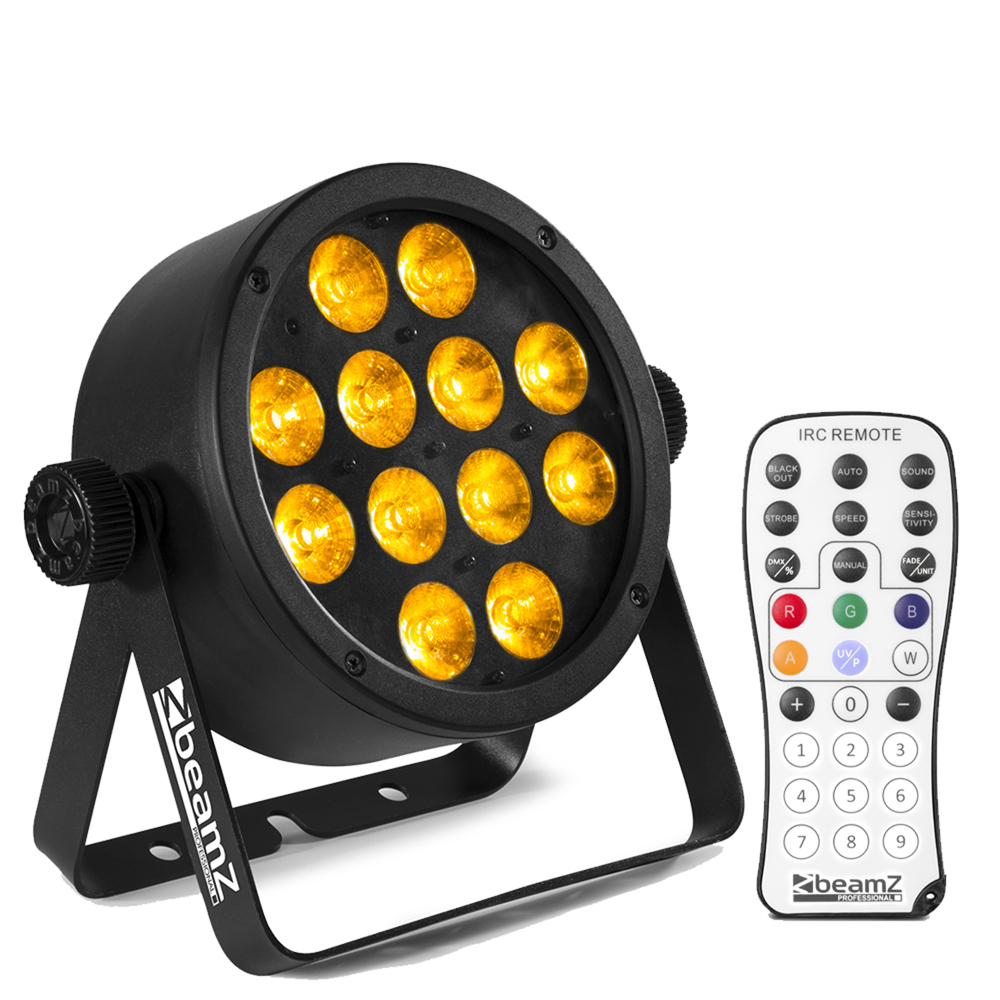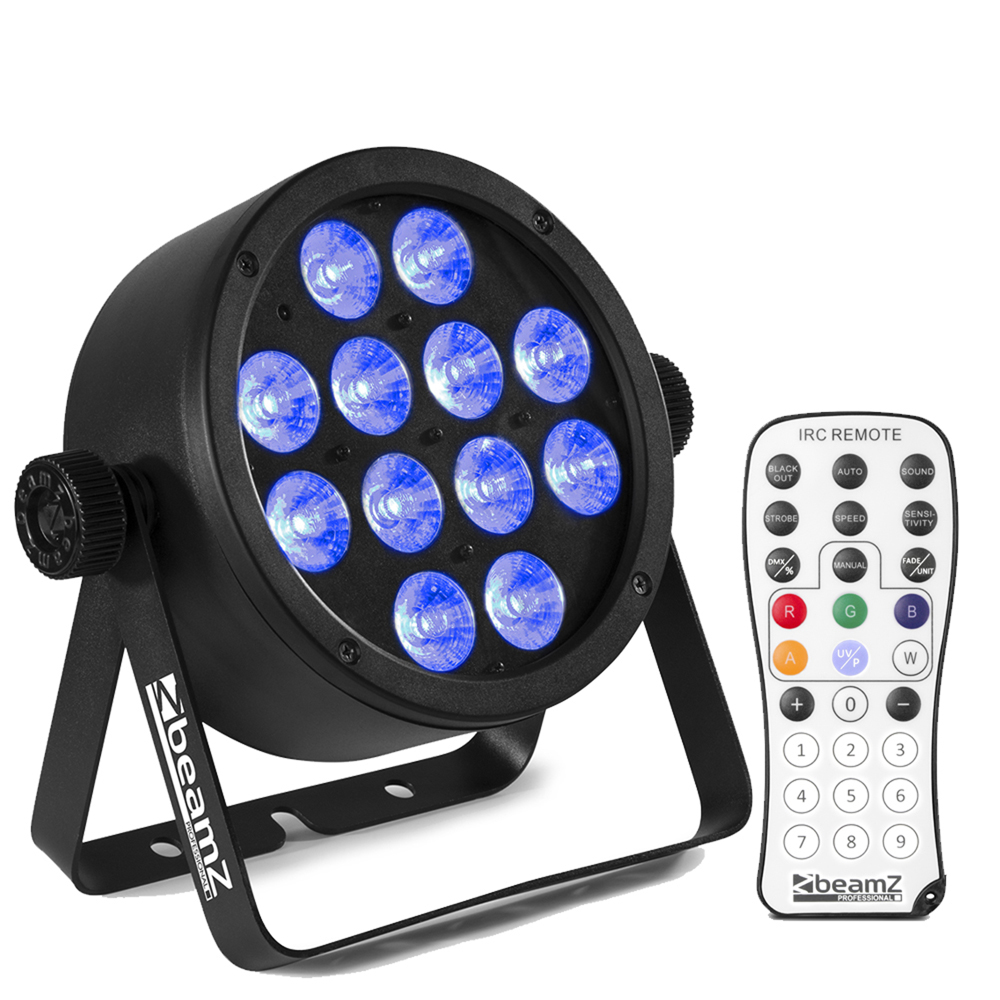Par Cans have been an industry staple since they were first introduced in 1968, and have graced every stage and studio lighting rig since.
The introduction of LED Par Can Lights came in around 2005, and due to the significant advances in LED lighting over the last decade have now pretty much replaced all consumer and professional lamp-based par lights.
All about LED PAR Cans
The capabilities of LED effects continue to improve dramatically, offering performance and durability that's perfect for both mobile lighting systems and lighting installations.
The modern LED Par Can give you all the benefits of low running cost, long lamp life and the virtual elimination of heat output. The heat reduction alone is a huge factor, just ask any stage performer or live musician what it's like to be near a traditional lamp par light for an entire evening!
The lack of heat from LED power has also allowed the switch over to plastic enclosures, helping to not only reduce weight but drastically lower costs, which has made high performance LED PAR Cans completely accessible to buyers of any budget.
At ElectroMarket, we see ourselves are specialists in lighting and effect systems, and so we’ve compiled this brief explanation of the various types of LED Par Cans on the market to help you better understand the differences:
-
10mm LED Par Can Lights
Instantly recognisable from the small individual diodes that cover the front surface of the Par fixture, these LED Par Cans are unmistakable. Prior to the creation of larger more powerful LED lamps, the use of 10mm LEDs was the standard design of LED-powered Par lighting offered to the market.
These earlier designs of LED Par lighting used this multi-LED format to great effect, though were slightly limited in colour mixing ability compared to newer technology due to the nature of their design. They make excellent wall wash lights though and are perfect as background colour fills.
This classic FlatPAR from BeamZ is the perfect example of the 10mm format, loaded with modern features, its powerful output includes a dedicated white mode and IR remote control.
Great for party lighting and indoor lighting, they are low cost and give excellent results.
 FlatPAR from BeamZ
FlatPAR from BeamZ
-
1W LED Par Can Lights
The next step for LED Par Cans came with the introduction of the larger 1W lamp style diode. Though still limited to single colour from each diode, these LED Par Cans offered superior colour definition and a much higher light output that made them suitable for stage use.
These larger bulb style diodes also looked more professional and found favour as wash lighting and for live performance work, as the lens fronted lamps provide a much wider beam angle then 10mm LED systems. The lack of heat compared to a traditional Par Can also make them a desirable upgrade.
A classic example of the 1W format is this fantastic Max PartyPAR LED Par Can which is perfect for uplighting and colour washes for marquees and events, providing a strong depth of colour and fan cooling for long use.
Fully featured with DMX and built-in show programming, this now-classic LED Par Can fixtures remain a popular unit for indoor architectural lighting and for live performers.
 Max PartyPAR LED Par Can
Max PartyPAR LED Par Can
-
Tri LED Par Can Lights
With LED lighting technology pushing forward at a fast pace, the next leap for LED Par Cans came with the invention of the tri-colour LED, which as the name suggests are a 3-in-1 diode that gives Red, Green and Blue (RGB) from a single diode lamp.
The main design triumph with tri-coloured LEDs is that the lens design only allows the mixed colours to be seen rather than the individual diode beams, meaning the output and subsequent wash will be a uniform solid colour.
Seen here in the classic BeamZ SlimPar 35the 3-in-1 LED lamps to give out stunning results, and are low cost too which makes them great multiple purchase items when putting together a mobile lighting rig.
 BeamZ SlimPar 35
BeamZ SlimPar 35
Quad-LED Par Can Lights
As the name would suggest, Quad-LED lamps are a 4-in-1 diode lamp system that offers the standard RGB colours but add in either W (White) production, or A (Amber) production, depending on the specific brand and model of LED Par Can.
RGBW is seen here in the fantastic BeamZ BAC304 which is a high power LED Par Can with a fanless aluminium housing design for silent operation.
For RGBA output, this lovely BeamZ BT310 FlatPar is a really great scene-setter for stage use and dancefloors, with its warm amber glow being preferred to a bright white.
-
Hex LED Par Can Lights
Following the already great Quad-LED system, the current range-topping LED Par Can units feature the amazing 6-in-1 Hex LED lamps, which are RGBWA+UV, adding in dedicated amber, white, and ultraviolet capability for a complete light spectrum.
Units like this BeamZ BAC306 are offering the modern DJ or events company and an immense amount of lighting power and versatility from one unit, with its wide palette and easy control allowing it to replace several effects lights in one go.
 BeamZ BAC306
BeamZ BAC306
-
COB LEDs
The latest LED lighting devices on the market, the COB LED has become an instant hit with product designers and manufacturers, and is featured in several new high power LED Lighting Effects.
Unique in design, COB (Chip On Board) LEDs are surface mount devices, small in size and structure yet containing multiple LED chips in one module. When lit, the multiple of tightly packed light diodes gives a huge increase in lumens output over standard LEDs of the same size.
A true spiritual successor to the traditional look of the filament lamp Par Can, COB powered units like this Beamz COB50 Par Light offer superb power output and colours in a smart-looking single lamp package.
 Beamz COB50 Par Light
Beamz COB50 Par Light
PAR?, PAR 64?, PAR 56? What does it all mean?
The term PAR is an acronym for Parabolic Aluminised Reflector, which refers to the construction of the filament-based lamp. The 'Can' part is simply referring to the metal container or enclosure.
And the numbers? 64? 56?
In simple terms, the standard sizing for all glass reflector bulbs and lamps is based on the diameter, measured in the imperial scale of eighths (⅛) of an inch.
So, a PAR 64, for example, will be 64 x 1 eighth of an inch in diameter. For easier maths, you can just divide the given PAR number by 8 to give you the housing size in inches.
The same dimension but in millimetres can be found by multiplying the PAR number by 3.125.
So, a PAR64 is 64/8 = 8 inches or 200mm front opening diameter.
So, LED Par Can64?
Though this number rating is still used on some modern LED Par lights, it is there purely as an easy reference to the physical size of the units front diameter.
Modern LED lamp fixtures obviously do not have Par bulbs either, and the term Par actually has no relevance to a multi-lamp based LED system, it was just adopted by manufacturers as the units evolved, and has stayed.




